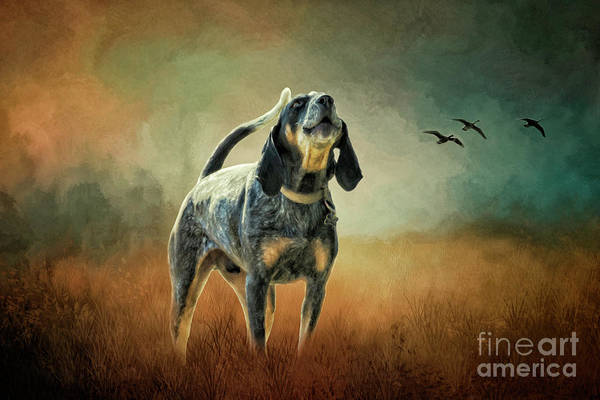
Once upon a time, there were no raccoons in Europe. None.
Raccoons are native to North America. The animals were brought to Germany for their fur in the 1930s, and since then, raccoons have proliferated across much of Europe.
You can image, then, what settlers who came to America must have been thinking when they encountered critters that could run up to 15 mph, had front paws that acted like human hands, and were clever enough to learn from situations to advance their intelligence.
Worse, the hounds they’d brought with them from Europe were useless because their dogs had never seen a raccoon before.
Hunters realized that they needed a dog that could tree a raccoon, and on a more rugged landscape. Out of the Foxhounds they’d brought from England, and Grand Bleu de Gascognes that came from France, they started to select for dogs that could work more difficult tracks and find raccoons in trees. Their new dogs needed to be able to tree prey, fight off dangerous animals, and the farther that settlers went from the coast, the hardier their dogs had to be.
A more egalitarian society in America saw people breeding their own lines of dogs, particularly in mountainous and swampy regions. A new type of treeing dog emerged, hounds generally separated by color, and it’s generally accepted that this new breed, the Bluetick Coonhound with its molten coloring was the result of mixing Foxhounds with the French Grand Bleu de Gascogne. This is especially evident not just in the dog’s blue tick coat, but also because the Bluetick Coonhound (especially a variety known as an American Bleu Gascogne), looked and hunted a lot like a Grand Bleu de Gascogne.
We breeze through much of the modern history of the breed and offer a “CliffsNotes version” by mentioning only that by the 1940s, Blueticks were “a thing.” A resolute, more methodical hunting style differentiated these dogs from other coonhounds, but many bluetick breeders shied away from joining kennel clubs for fear that conformation would trump ability, and their dogs would lose their working instincts. In 1945, fanciers broke away and started their own registry separate from that of the English Coonhounds of which they were considered a variety. They called their dogs the name by which we know them today: Bluetick Coonhound. There were other, more immutable differences that lead to a separation. Bluetick breeders valued dog with a “cold nose” which meant that these dogs had ability to run a older track as opposed to a fresh laid track. English breeders preferred dogs with a “hot nose” because they were more likely get a rapid treeing of an animal.
The Bluetick Coonhound’s hunting style, and its long, melodious bugle bawl on the track lead to the term, “blueticking.” For reasons we don’t understand, these days, “blue ticking” also refers to when someone reads your WhatsApp and doesn’t respond.
Image: “BlueTick Hound” by Jan Galland is available as fine art and in home decor and lifestyle items here.
